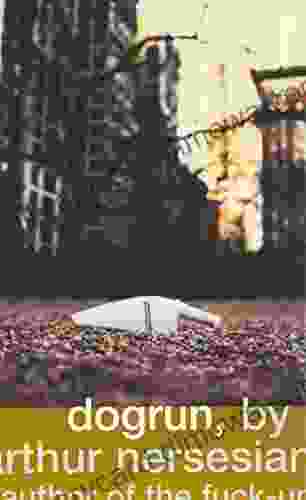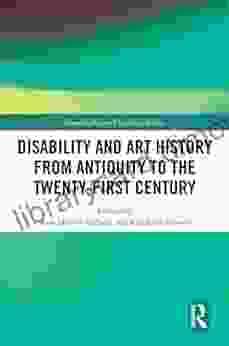Disability and Art History: Exploring the Intersection of Representation and Identity

The history of art is replete with images of disability, from ancient sculptures depicting deformed figures to modern paintings featuring amputees and wheelchair users. However, the interpretation of these images has often been shaped by the dominant cultural attitudes towards disability, which have ranged from pity and fear to admiration and acceptance.
In recent decades, there has been a growing interest in disability art history, a field that examines the ways in which disability has been represented in art and how these representations have influenced our understanding of disability. This article will explore the intersection of disability and art history, examining how the depiction of disability in art has evolved over time and how these representations reflect the changing attitudes towards people with disabilities. It will also highlight the work of contemporary artists with disabilities who are challenging traditional representations and creating new narratives.
5 out of 5
| Language | : | English |
| File size | : | 24761 KB |
| Screen Reader | : | Supported |
| Print length | : | 180 pages |
Disability in Ancient Art
The earliest known depictions of disability in art date back to ancient Egypt, where scribes and artists often depicted individuals with physical deformities. These images were often used to convey moral lessons about the dangers of sin and the importance of piety. In ancient Greece, people with disabilities were often excluded from society and seen as a burden. This is reflected in the art of the period, which rarely depicts individuals with disabilities.
However, there are some notable exceptions to this trend. The Greek sculptor Praxiteles created a famous statue of Aphrodite, the goddess of beauty, that depicts her with a deformed foot. This statue suggests that the Greeks were not always as intolerant of disability as is often assumed.
In ancient Rome, people with disabilities were often seen as objects of pity and charity. This is reflected in the art of the period, which often depicts individuals with disabilities as beggars or objects of ridicule.
Disability in Medieval and Renaissance Art
During the Middle Ages, the Christian Church played a major role in shaping attitudes towards disability. The Church taught that disability was a punishment for sin and that people with disabilities were objects of pity and charity. This view is reflected in the art of the period, which often depicts individuals with disabilities as beggars or objects of ridicule.
However, there are some notable exceptions to this trend. The medieval artist Giotto di Bondone created a famous fresco cycle that depicts the life of Saint Francis of Assisi. In one of the frescoes, Saint Francis is shown healing a man with leprosy. This fresco suggests that the medieval Church was not always as intolerant of disability as is often assumed.
During the Renaissance, there was a renewed interest in classical art and philosophy. This led to a more positive view of disability, and people with disabilities were increasingly depicted in art as individuals with dignity and worth.
Disability in Modern and Contemporary Art
The 19th century saw the rise of the medical model of disability, which viewed disability as a medical problem that needed to be cured. This view led to the development of new technologies and treatments for people with disabilities, but it also reinforced the idea that disability is something that should be hidden or fixed.
This view is reflected in the art of the period, which often depicts individuals with disabilities as objects of pity or sympathy. However, there are some notable exceptions to this trend. The French artist Édouard Manet created a famous painting of a woman with a prosthetic leg. This painting is one of the first to depict a person with a disability in a positive and non-judgmental way.
In the 20th century, there was a growing movement for disability rights. This movement challenged the medical model of disability and promoted the idea that people with disabilities are equal to people without disabilities. This view is reflected in the art of the period, which increasingly depicts people with disabilities as individuals with agency and self-determination.
Contemporary artists with disabilities are continuing to challenge traditional representations of disability and create new narratives. These artists are using their work to challenge stereotypes, promote disability pride, and advocate for social change.
The history of art is a complex and ever-changing one, and the representation of disability in art is no exception. The ways in which disability has been depicted in art have evolved over time, reflecting the changing attitudes towards people with disabilities. Contemporary artists with disabilities are continuing to challenge traditional representations of disability and create new narratives, promoting disability pride and advocating for social change.
5 out of 5
| Language | : | English |
| File size | : | 24761 KB |
| Screen Reader | : | Supported |
| Print length | : | 180 pages |
Do you want to contribute by writing guest posts on this blog?
Please contact us and send us a resume of previous articles that you have written.
 Book
Book Novel
Novel Page
Page Chapter
Chapter Text
Text Story
Story Genre
Genre Reader
Reader Library
Library Paperback
Paperback E-book
E-book Magazine
Magazine Newspaper
Newspaper Paragraph
Paragraph Sentence
Sentence Bookmark
Bookmark Shelf
Shelf Glossary
Glossary Bibliography
Bibliography Foreword
Foreword Preface
Preface Synopsis
Synopsis Annotation
Annotation Footnote
Footnote Manuscript
Manuscript Scroll
Scroll Codex
Codex Tome
Tome Bestseller
Bestseller Classics
Classics Library card
Library card Narrative
Narrative Biography
Biography Autobiography
Autobiography Memoir
Memoir Reference
Reference Encyclopedia
Encyclopedia Anthony Hope
Anthony Hope Aparajita Chatterjee
Aparajita Chatterjee Ian Paterson
Ian Paterson Laurie S Sutton
Laurie S Sutton April Kihlstrom
April Kihlstrom Kareem Abdul Rahman
Kareem Abdul Rahman Jonathon Kibler
Jonathon Kibler Kateryna Tomina
Kateryna Tomina Hector Ramos
Hector Ramos Kristopher Antekeier
Kristopher Antekeier Anton Bovier
Anton Bovier S I Martin
S I Martin Annelie Botes
Annelie Botes Samuel Beckett
Samuel Beckett Aoitripjp
Aoitripjp Ardi Aaziznia
Ardi Aaziznia Annie Tyson
Annie Tyson Anton Chekhov
Anton Chekhov Cynthia Cooper
Cynthia Cooper John Ed Bradley
John Ed Bradley
Light bulbAdvertise smarter! Our strategic ad space ensures maximum exposure. Reserve your spot today!
 Douglas PowellFollow ·18.8k
Douglas PowellFollow ·18.8k Todd TurnerFollow ·6.9k
Todd TurnerFollow ·6.9k Clinton ReedFollow ·6.5k
Clinton ReedFollow ·6.5k Sammy PowellFollow ·10.3k
Sammy PowellFollow ·10.3k Haruki MurakamiFollow ·19.1k
Haruki MurakamiFollow ·19.1k Hunter MitchellFollow ·2.1k
Hunter MitchellFollow ·2.1k Aaron BrooksFollow ·13.1k
Aaron BrooksFollow ·13.1k Louis HayesFollow ·19.8k
Louis HayesFollow ·19.8k

 Anton Chekhov
Anton ChekhovMother Goose The Old Nursery Rhymes Illustrated By Arthur...
A Journey Through the Enchanted Gardens of...

 Alexander Blair
Alexander BlairUnleash the Power of Imagination: Exploring the...
A Literary...

 Harry Hayes
Harry Hayes50 Quick and Easy Ways to Become Brilliant at Project...
Project stakeholder...

 Gus Hayes
Gus HayesSimple Practical Tips To Understand The Basics Of...
: The Looming Threat of...

 Connor Mitchell
Connor MitchellUnleash Your Literary Superpowers: Immerse Yourself in...
Welcome to a Captivating Universe of...
5 out of 5
| Language | : | English |
| File size | : | 24761 KB |
| Screen Reader | : | Supported |
| Print length | : | 180 pages |














